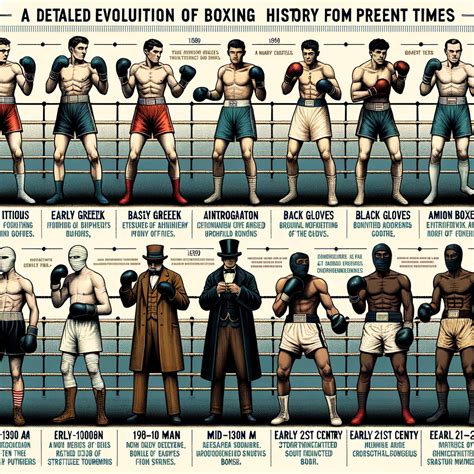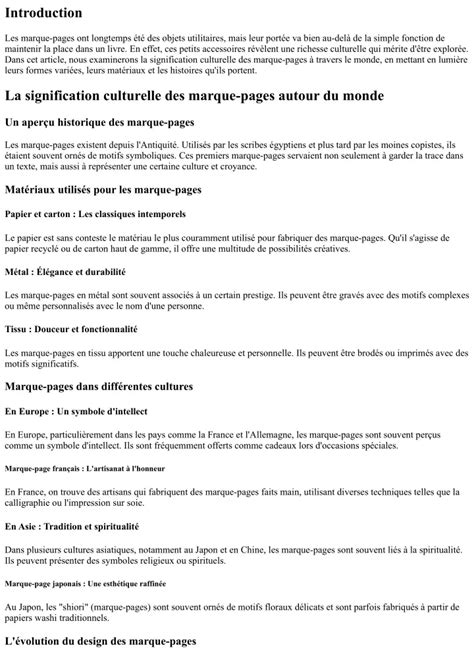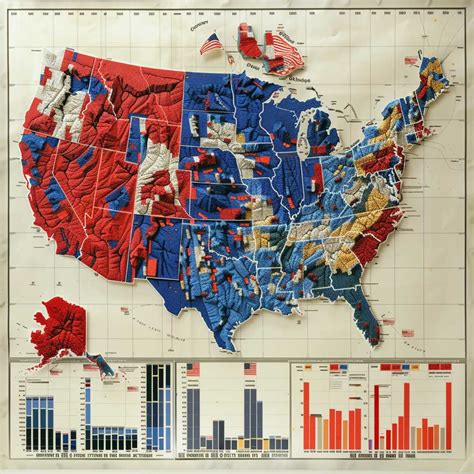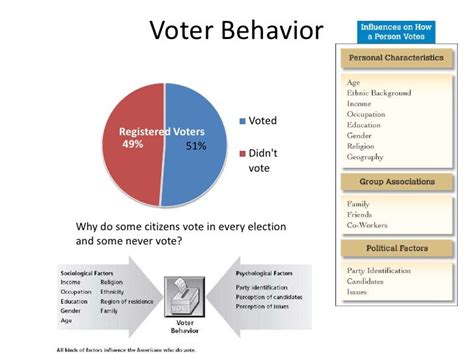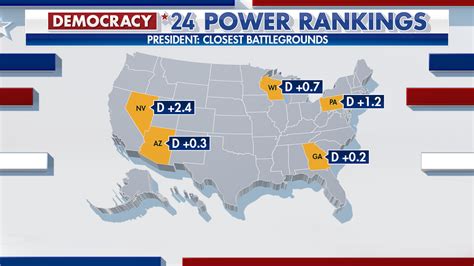Explore the history, evolution, and regulation of boxing, including key milestones, safety impacts, and future trends shaping the sport today.Boxing, a sport steeped in history and tradition, has undergone significant transformations since its inception. The Evolution of Boxing Rules: A Comprehensive Overview delves into the fascinating journey of boxing, exploring the foundational changes that have shaped this combat sport. From its ancient origins to the modern-day regulations enforced by trusted bodies, understanding the evolution of boxing rules is essential for fans, fighters, and policymakers alike. This article illuminates key milestones that have impacted how the sport is played, particularly in terms of safety standards and regulatory frameworks. As boxing continues to evolve, we will examine the future trends that promise to further reshape the landscape of this time-honored sport. Join us as we unravel the intricate tapestry of boxing history and its ongoing developments.
The Origins Of Boxing: Understanding Its Historical Context
The sport of boxing has deep-rooted historical origins that date back thousands of years. These beginnings are not just about punches and fights; they intertwine with ritual, mythology, and cultural significance in various civilizations. Early forms of boxing can be traced back to ancient cultures, with the earliest records found in Mesopotamia around 3000 BC, where depictions of boxers were etched onto clay tablets.
In ancient Greece, boxing became a celebrated event within the Olympic Games around 688 BC, showcasing the athletic prowess and combat skills of competitors. Greek boxing, or ‘pugilism’, was characterized by the use of leather straps around the hands instead of gloves, which often resulted in brutal matches that tested the fighters’ endurance and resilience.
The evolution of boxing continued through the Roman Empire, where it turned into a spectator sport, heavily stylized and often integrated with various forms of entertainment. The Roman gladiatorial games brought about a more dangerous and lethal version of boxing, as fighters were often pitted against one another or wild animals.
As we moved into the 17th and 18th centuries in England, boxing began to formalize into a more organized sport with specific codes of conduct and rules. The introduction of the Bare-Knuckle Boxing Championship in 1681 marked a significant step in the evolution of boxing, as it set the stage for the development of more structured regulations.
This historical context provides a vital understanding of how the sport has adapted and changed while simultaneously confronting social and ethical issues. The ongoing development of rules reflects broader societal values, including the ever-growing concern for athlete safety and integrity within the sport.
Overall, the origins of boxing reveal a complex tapestry of human history that has been shaped by cultural influences and the universal allure of competition, paving the way for the modern sport we recognize today.
Key Milestones In The Evolution Of Boxing Rules
The history of boxing is marked by significant milestones that have shaped the sport into what it is today. Understanding these key moments in its The Evolution reveals how rules were adapted and standardized to ensure fair play, enhance safety, and promote the sport’s growth.
One of the earliest versions of boxing rules can be traced back to the 1700s with the introduction of the London Prize Ring Rules, which marked a pivotal moment in the sport. These rules established guidelines for matches, including the use of a ring and the prohibition of certain strikes, thus laying the foundation for future regulations.
In 1867, a significant turning point occurred with the formulation of the Marquess of Queensberry Rules. These rules introduced the concept of gloves, rounds, and judges to score bouts, all of which are integral to modern boxing. This marked a notable shift towards organized sport, emphasizing both competitors’ safety and fair competition.
The early 20th century saw further advancements with the establishment of various boxing commissions, which contributed to the unification of rules across regions. The formation of the New York State Athletic Commission in 1920 was instrumental in promoting standardized rules and regulations that minimized corruption and enhanced the sport’s integrity.
Another critical milestone was the introduction of weight classes in the late 19th century, which ensured that fighters would face opponents of similar size and ability. This reform significantly impacted the fairness of matches and led to the separation of amateur and professional boxing standards.
The latter half of the 20th century brought about the inclusion of mandatory medical examinations and the implementation of stricter safety protocols following concerns regarding fighter health and welfare. Regulations regarding knockouts, referee discretion, and fight stoppages were updated to protect participants better.
As the sport continues to evolve, ongoing discussions around the implementation of technology, such as instant replay and advanced scoring systems, indicate that boxing remains committed to adapting and improving its rules for both fighters and fans.
Each of these milestones illustrates the ongoing evolution of boxing rules, reflecting societal shifts in attitudes towards safety, fairness, and the sport’s integrity. As boxing continues to grow, the lessons drawn from its past will guide its future trajectory.
The Role Of Regulatory Bodies In Shaping Boxing Standards
The evolution of boxing over centuries has been significantly influenced by various regulatory bodies that have emerged to enforce rules and standards in the sport. These organizations help manage the sport’s integrity, ensuring that the necessary regulations are in place to protect both the fighters and the sport itself.
Some of the key regulatory bodies include:
| Regulatory Body | Founded | Key Responsibilities |
|---|---|---|
| World Boxing Association (WBA) | 1921 | Championship titles, fighter rankings, and rules integration. |
| International Boxing Federation (IBF) | 1983 | Regulations on weight classes and championship fights. |
| World Boxing Council (WBC) | 1963 | Ensuring fighter safety and establishing unified rules. |
| European Boxing Union (EBU) | 1913 | Regulating matches within Europe and promoting fair play. |
These bodies not only enforce the rules of boxing but also adapt and revise them as needed to reflect the changing dynamics of the sport. The evolution of boxing rules includes updates that enhance fighter safety protocols, such as mandatory medical examinations and stricter weight regulations.
The active engagement of these organizations in rule-setting and enforcement assures that boxing maintains a high standard of conduct, ensuring that the sport remains a fair competition. Moreover, they contribute to the worldwide recognition of boxing as a respectable sport, thus promoting its growth and development over time.
How The Evolution Of Boxing Impacted Fighter Safety
The safety of boxers has significantly improved over the years due to the ongoing The Evolution of boxing rules and regulations. Historically, the sport lacked standardized safety practices, often resulting in severe injuries. However, as the sport gained popularity, the need for enhanced safety measures became evident.
One of the key changes contributing to fighter safety was the introduction of protective gear. Initially, fighters competed bare-knuckled, which led to numerous injuries. The adoption of padded gloves in the late 19th century marked a pivotal moment in The Evolution of the sport, greatly reducing the damage inflicted during bouts.
Moreover, standardization of weight classes has also played a vital role in ensuring fair competition and safety. By categorizing fighters by weight, regulations help prevent mismatches that could lead to dangerous situations in the ring.
| Safety Measures | Description |
|---|---|
| Increased Medical Oversight | Pre-fight medical examinations and on-site medical personnel ensure prompt attention to injuries. |
| Mandatory Time Off | Boxers must adhere to recovery protocols between fights to minimize the risk of long-term injuries. |
| Referee Intervention | Referees are trained to stop fights when a boxer is deemed unable to continue safely, preventing further harm. |
| Comprehensive Training Regulations | Guidelines for training camps and sparring sessions help ensure boxers prepare without risking their safety. |
In recent years, organizations have implemented protocols for brain injury prevention, illustrating the sport’s response to concerns about long-term health impacts. Concussions and other traumatic brain injuries have prompted the introduction of stricter post-fight medical evaluations and ongoing monitoring for fighters.
Overall, the journey of The Evolution of boxing rules has had a profound impact on fighter safety, establishing a framework that prioritizes the health and well-being of athletes in the ring. As the sport continues to evolve, it is likely that further advancements will be made to ensure a safer environment for all participants.
Future Trends: The Evolution Of Boxing Rules And Regulations
As boxing continues to grow and adapt, the The Evolution of its rules and regulations will play a crucial role in the sport’s future. Several trends are emerging that may significantly influence how the sport is governed and perceived globally.
One trend is the increasing emphasis on fighter safety and health. With advancements in medical understanding of concussions and related injuries, regulatory bodies are likely to implement stricter protocols for medical examinations, recovery times, and mandatory health checks. This could lead to changes in how bouts are scheduled and how fighters are matched based on their health backgrounds.
Additionally, we may see an evolution in the use of technology during fights. The integration of real-time data analytics, performance tracking, and even AI-assisted decision-making could influence not just training but also officiating during bouts. These technologies could ensure more fair and accurate assessments of fighters’ performances, helping to eliminate any biases that may exist in current judging methods.
Another important trend is the potential for worldwide standardization of boxing rules. Currently, different regions and organizations have varying rules which can lead to confusion and inconsistency. As the sport becomes more global, there might be pressure from fans and fighters alike for a unified set of rules, similar to how other international sports operate.
Moreover, the growing popularity of women’s boxing could also shape the future rules of the sport. As female participation increases, there may be developments tailored to promote equality within the sport, which could include rule adjustments and increased support for women’s competitions.
The future of boxing is poised for significant change, reflecting the ongoing The Evolution of societal expectations, health considerations, and technological advancements. As these trends unfold, they will undoubtedly shape the regulations that govern the sport, ensuring a safer and fairer environment for all fighters.
Frequently Asked Questions
What prompted the changes in boxing rules over the years?
The evolution of boxing rules has been influenced by safety concerns, the need for fair competition, and the introduction of standardized regulations across different regions and organizations.
When were the initial boxing rules established?
The initial modern boxing rules, known as the Marquess of Queensberry rules, were established in 1867 and introduced key elements such as weight classes, rounds, and the use of gloves.
How have safety measures in boxing evolved?
Safety measures in boxing have evolved with the introduction of mandatory medical examinations, stricter referee guidelines, and equipment regulations, including the use of headgear in amateur boxing.
What is the significance of the unified championship rules?
Unified championship rules provide a standardized set of regulations that promote consistency in professional boxing matches and ensure fairness among different boxing organizations.
How did the rise of women’s boxing impact rules and regulations?
The rise of women’s boxing has led to the establishment of specific rules addressing weight classes, rounds, and safety protocols to promote fairness and competitiveness in women’s matches.
What role does technology play in modern boxing rules?
Technology plays a significant role in modern boxing by providing enhanced training tools, video replay for better officiating, and advanced analytics to assess performance and health.
What are some current debates regarding boxing rules?
Current debates regarding boxing rules include discussions on the length of rounds, the use of performance-enhancing substances, and the implementation of stricter safety protocols to protect fighters.

